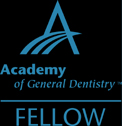|

|
Blog
Post 12:
ADA
Accepted Seal
ADA
Accepted Seal
By Eric Cheung, DDS
Atwater Family Dental Blog Series: Debunking Dental Myths
What
is the ADA Seal of Acceptance?
The ADA Seal is a mark that a dental product has met
certain safety and efficacy standards set by the ADA’s
Council on Scientific Affairs.
In their words:
•
The Seal dates back to 1931, when the ADA adopted
guidelines to evaluate dental products for safety
and efficacy.
•
The tagline on the website: “The ADA Seal of
Acceptance has been the leading mark of dental product
safety and efficacy for 93 years.”
•
Today, over 400 over-the-counter dental products carry
the Seal.
• For consumers: when you see the ADA Seal on
a product, it means the product has been evaluated
by the ADA for safety and performance (in its category).
•
For dental professionals: it offers a third-party
indication to help them recommend consumer dental
products with confidence. The ADA states that market
research shows the Seal influences purchase decisions.
•
For manufacturers: obtaining the Seal involves submitting
clinical and/or lab data, and agreeing to an ongoing
review and usage standards.
• A product must meet “product category
requirements” developed by the ADA Council on
Scientific Affairs.
•
The product submission must include data from clinical
and/or laboratory studies demonstrating safety and
efficacy.
•
A “Seal” is awarded for a five-year period,
but if the product’s composition changes, the
manufacturer must submit updated data, and the Council
may require additional testing.
•
Products that are accepted must display the Seal logo,
follow ADA brand standards, and include specified
Seal statements on packaging or advertising.
Some
historical context & credibility
• The ADA’s involvement in regulating
dental products started well before the Seal itself:
as early as 1866 the ADA committee made statements
about tooth powders and “dental nostrums”
(i.e., questionable products) in the interest of public
protection.
•
In 1984, President Reagan gave the ADA a certificate
of commendation for its self-regulatory efforts via
the Seal program.
•
Because the Seal program involves independent review
(via the Council and sometimes external consultants
in fields like toxicology, microbiology, chemistry,
dental materials) it provides a higher level of assurance
than just “claims on the packaging.”
• Look for the ADA Seal logo on dental product
packaging — it signals that the product has
gone through the evaluation process outlined above.
•
Even with the Seal, it’s still wise to use products
as directed, maintain regular dental check-ups, and
follow your dentist’s advice; the Seal is part
of the picture, not the whole picture.
•
Note: Just because a product doesn’t
have the ADA Seal doesn’t automatically mean
it’s unsafe or ineffective — it may just
mean it hasn’t gone through the ADA’s
Seal program or chosen not to pursue it.
•
Look for up-to-date packaging: the ADA mentions the
Seal statement was revised in 2016 to a more consumer-friendly
form.
My
take / commentary
I like the ADA Seal of Acceptance for several reasons:
•
It gives an extra layer of trustworthiness in a market
where dental product claims can be exaggerated or
confusing (think “whitest teeth in two days!”
etc.).
•
It’s especially useful for consumers who are
unsure about which over-the-counter dental products
to buy.
•
For dental professionals, it simplifies recommendations
because they can say “look for the ADA Seal”
rather than picking every product apart individually.
•
If I am going to spend similar money on dental products,
I am willing to pay a little more for the ADA Accepted
products.
However,
there are caveats:
•
The Seal doesn’t guarantee a product is the best
in every scenario — it simply means it meets baseline
standards of safety and efficacy for its category. There
may be other products without the Seal that also perform
well.
|
|